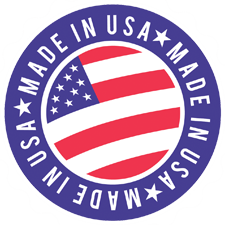Why Hydraulic Costs are among the Top Expenses in Waste Collection
When I worked as an editor for Hydraulics & Pneumatics magazine, I attended LOTS of trade shows. Sure, many of the exhibitors displayed hydraulic components, but my main reason for attending was to sniff out useful info from original equipment manufacturers. Because construction, mining, and waste-processing equipment makes such heavy use of hydraulics, I spent many hours walking trade show aisles in search of the next lead about how hydraulics made these machines so successful.
I also studied conference programs to see if any covered hydraulics. I remember one session in particular, which was presented by an official from a major waste collection company. The presenter covered major expenses in operating a fleet of garbage trucks. He then mentioned the three biggest expenses: fuel, tires, and hydraulics. Hydraulics? Fuel cost is a no brainer, and I suppose these heavy trucks go through tires pretty quickly, and I imagine these tires are pretty expensive. But I wouldn’t expect hydraulics to be among the big three unless it was a very distant third.
Once the presenter began discussing details, he shed some light on why hydraulics was such a high expenditure in garbage truck operation. As you’d expect, having to replace filters, maintain hose assemblies, replace other consumables, and conduct regular maintenance could add up for a large fleet. But even throwing in occasional repairs to major components seems like it still would not push hydraulics into the big three. But then it became clear.
He mentioned that his company’s fleet of trucks regularly required major repair or replacement on hydraulic cylinders. He said one of the most common failures was cylinder piston rods breaking loose from the piston. He explained that the connection between the piston and rod undergoes a huge amount of stress. Consequently, repeatedly subjecting the cylinders to heavy shock causes early fatigue failure of the rod-to-piston interface.
I wanted to know more, so I consulted an industry expert. The expert didn’t sound surprised at all after I explained all this to him. He said he was all too familiar with this scenario. He said the company in question goes through so many cylinders because they use lightweight, inexpensive cylinders that are more appropriate for use on agricultural equipment. They are not designed to withstand heavy shock loading — especially when frequent shock loads are inherent to the application.
He said a cylinder designed for this application would withstand continual heavy shock and no longer be the “weak link” of the hydraulic system. However, these cylinders would be larger, heavier, and carry a higher initial cost then ag-type cylinders.
Finally, I asked the expert how often cylinders come in for repair where the rod-to-piston connection has broken. He said he couldn’t remember the last time he saw that type of failure. But having a team of experts to recommend the best cylinder for an application would prevent problems like this from occurring.
But if you repeatedly see a failure in certain components (whether the rod breaks away from the piston, the seals or bearings wear out prematurely, or any other recurring failure) the application should be re-examined to determine what needs to be done to reduce or eliminate future failures.
By: Alan Hitchcox
After serving as a vehicle mechanic in the US Army, Alan attended college full time to earn a Bachelor of Science while also working full time for a power transmission and fluid power distributor. He then became a technical editor and wrote or edited hundreds of technical articles for 38 years, with the last 32 on Hydraulics & Pneumatics magazine before becoming semi-retired in 2020.









Leave a Reply
You must be logged in to post a comment.